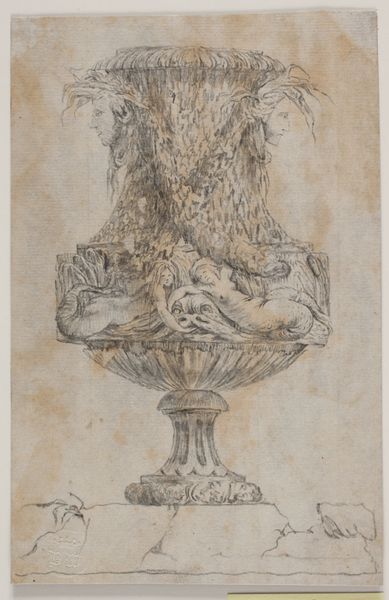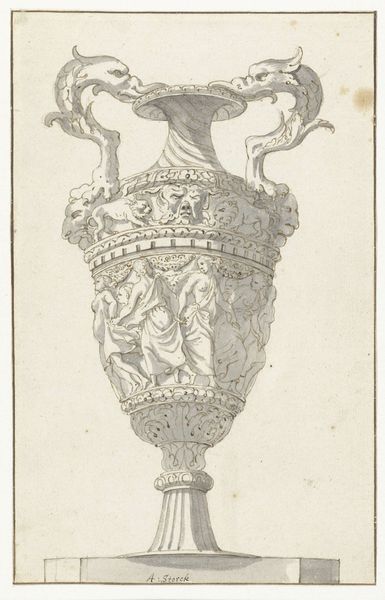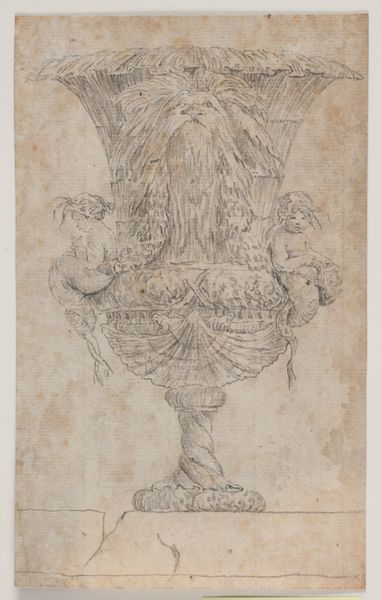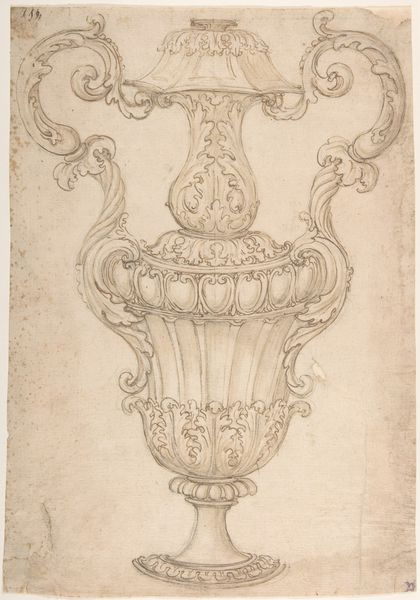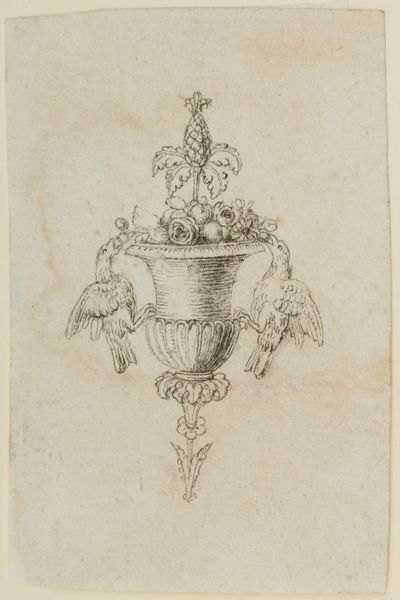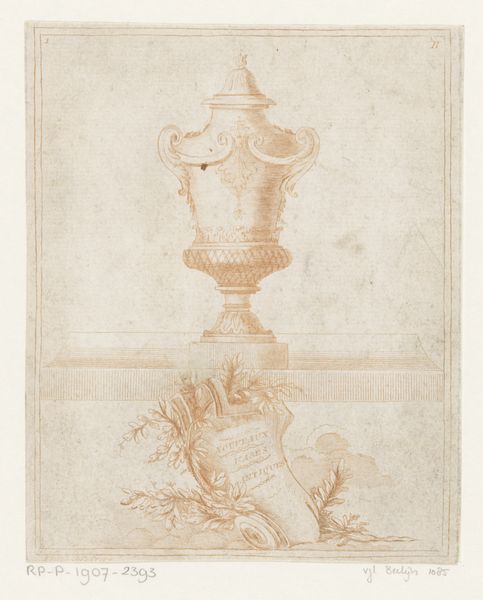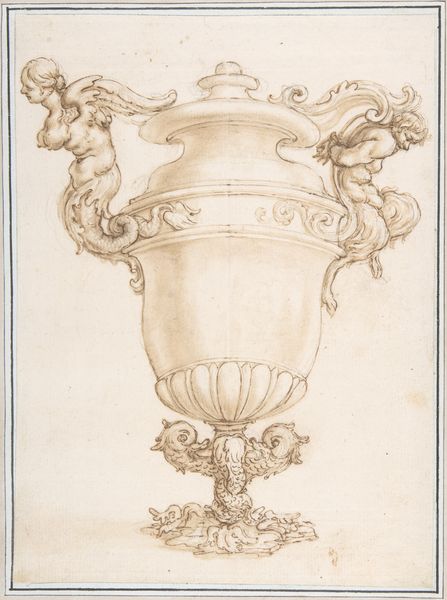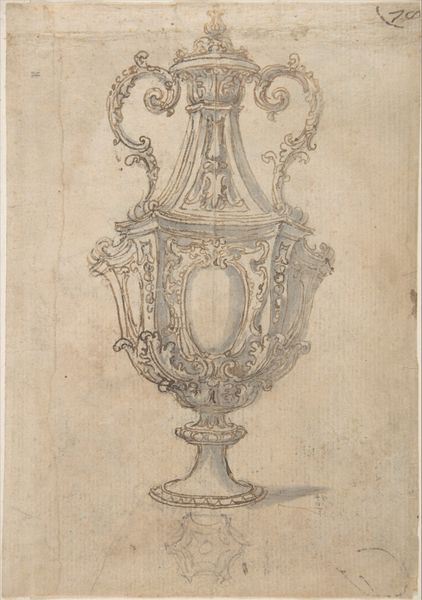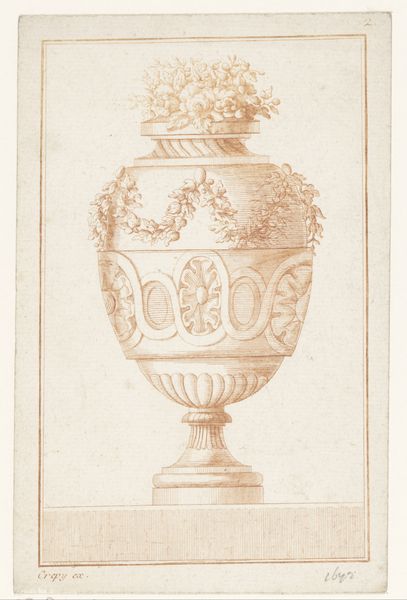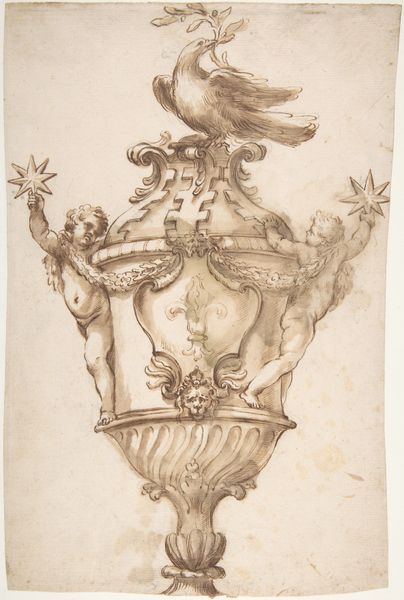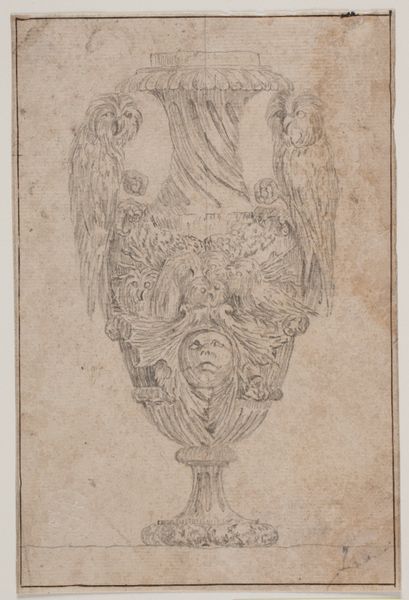
Prydvase med stort hoved, havgud og vandnymfe. Kopi efter Pl. 26 i suiten af de i 1746 af Saly tegnede vaser. "Vasa a se inventa..." 1746 - 1846
0:00
0:00
drawing, pencil
#
drawing
#
neoclacissism
#
classical-realism
#
figuration
#
geometric
#
pencil
Dimensions: 182 mm (height) x 124 mm (width) (bladmaal)
This drawing presents an elaborate vase, rendered by an anonymous artist, copied from a 1746 design. The detailed graphite lines capture a complex form adorned with figures from mythology. The vase is visually top-heavy. The large head of a sea god dominates the composition, flanked by a water nymph. This creates a densely decorated zone contrasted with the comparatively simpler base. The intricate ornamentation invites a structuralist reading. The artist employs classical motifs—nymphs, sea gods, foliage—to create a sense of historical depth. Yet, the drawing's power lies in its destabilization of classical ideals. The exaggerated features and the somewhat chaotic arrangement challenge the order typically associated with classical art. Consider how this print challenges fixed meanings. The act of copying itself raises questions about originality and authorship. It prompts us to consider how meaning is constructed. Does the drawing celebrate the classical past, or does it subvert it through exaggeration and reinterpretation? This piece exemplifies how art engages in a continuous dialogue with history.
Comments
No comments
Be the first to comment and join the conversation on the ultimate creative platform.

